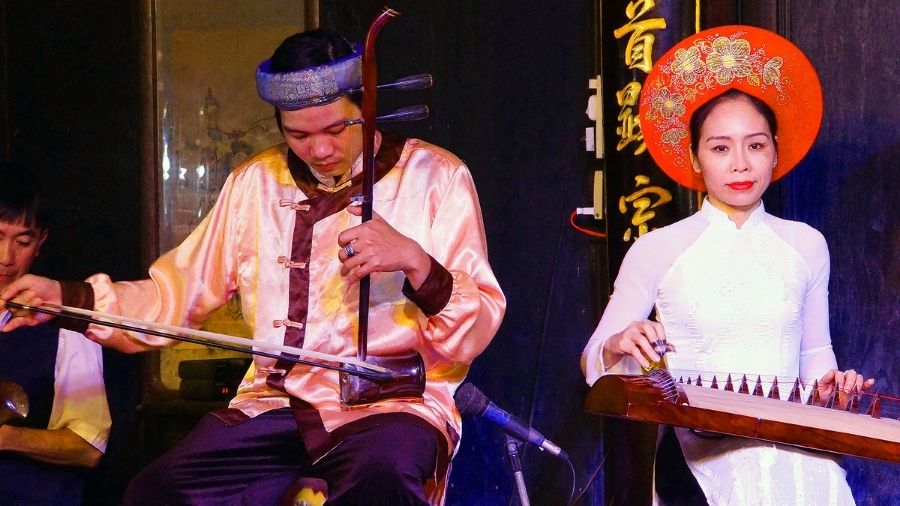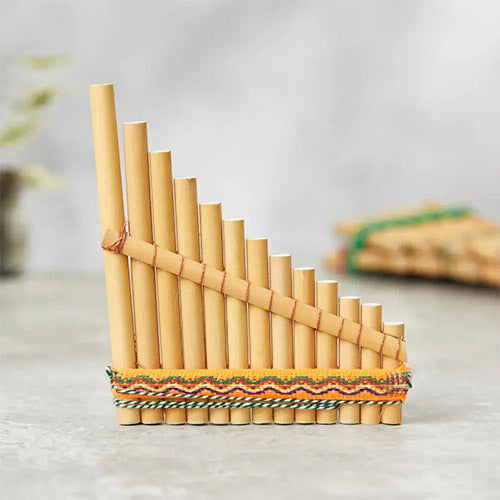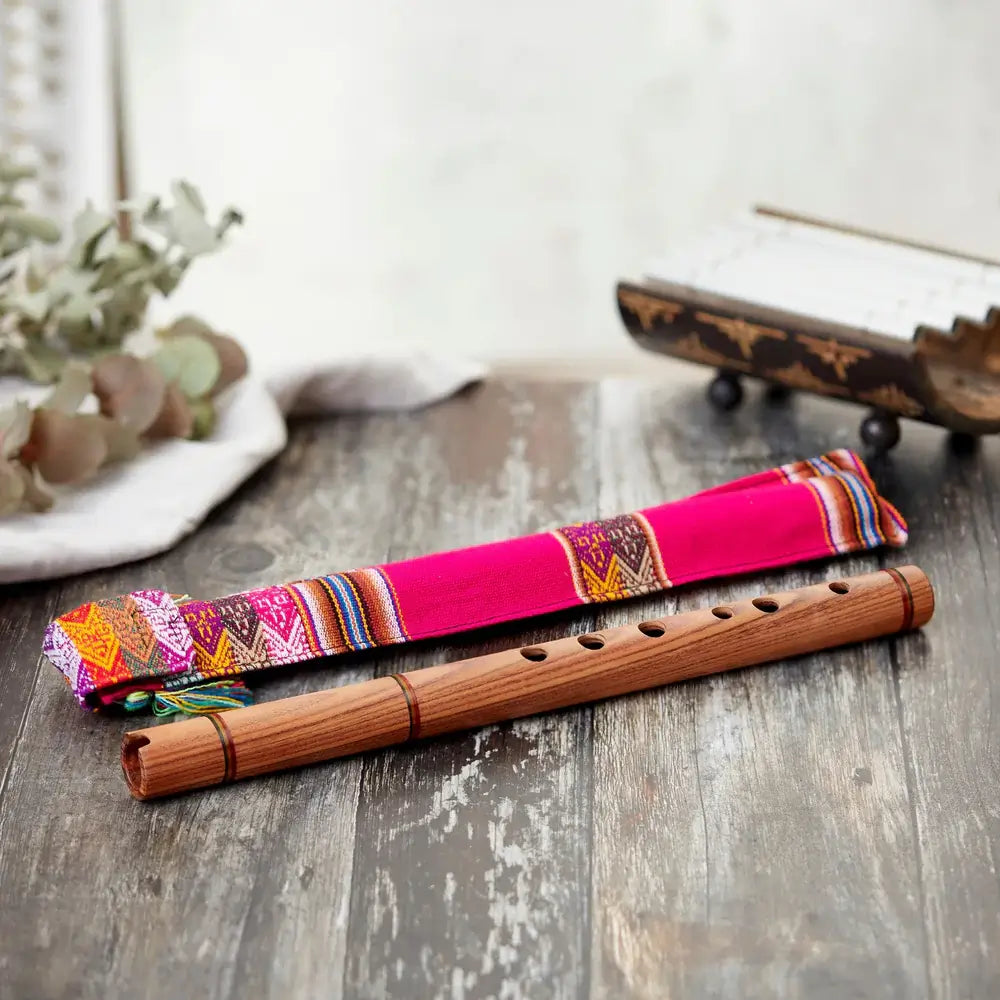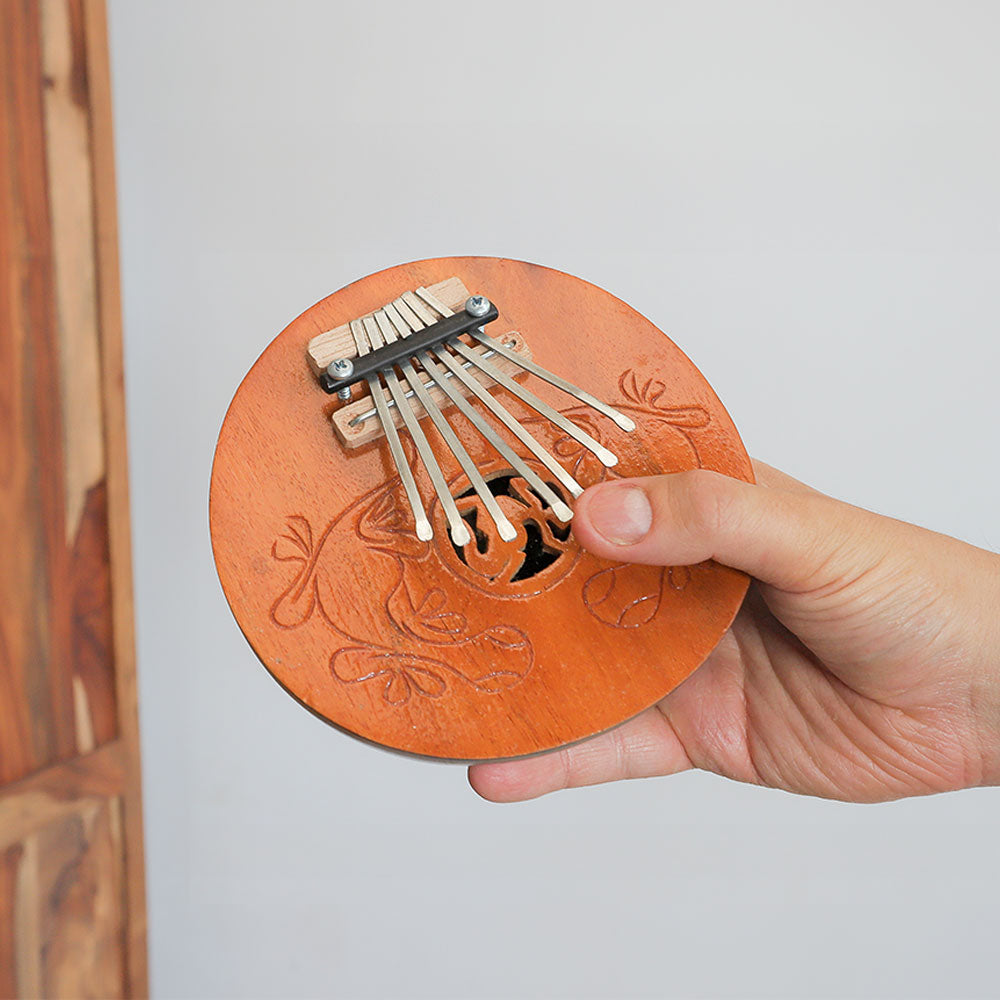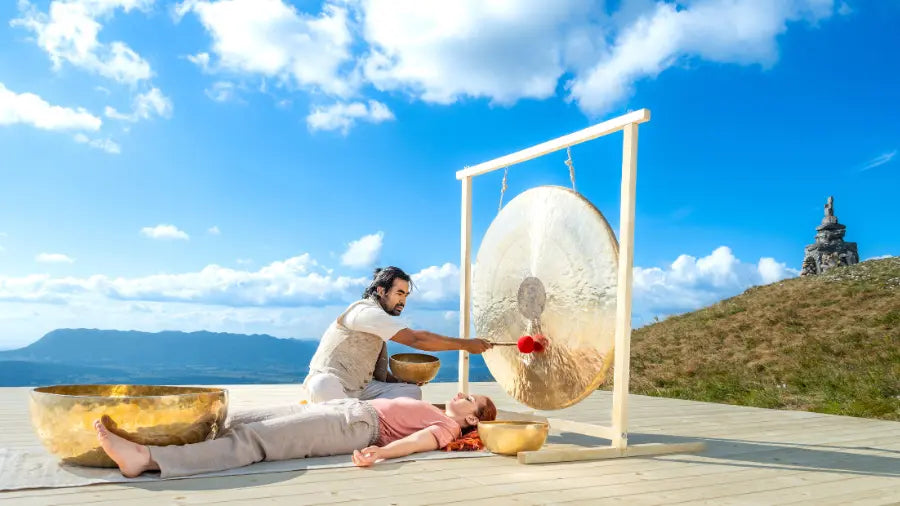Let's discover traditional Japanese musical instruments used for performances and storytelling. The classical Japanese instruments we will examine are the Koto, Shamisen, Taiko drums, Shakuhachi, and many more. Each one plays an integral part in Japanese classical music.
1. Koto

The Koto is one of Japan's most iconic instruments. It is a large stringed instrument used in classical music. It typically has 13 strings, though some versions can have more. This traditional Japanese stringed instrument has a long, wooden body and thirteen strings stretched over movable bridges. Players wear fingerpicks to pluck the strings, producing tones that can be gentle, strong, or vibrant, depending on the style of play. The Koto is often featured in classical Japanese music and is commonly played alongside vocals or other instruments in ensemble settings.
2. Shamisen

A traditional Japanese instrument used in theatres is the Shamisen. This instrument is popular in Asian music and is played with a large pick, known as a bachi. It produces a twang sound.
3. Taiko Drums

Taiko drums are traditional Japanese percussion instruments with an energetic presence and a thunderous sound. Varying in size, they are often played in choreographed routines, performances, rituals, and festivals. Taiko drums are known for emphasizing rhythm, energy, and teamwork. They are used in both traditional and modern Japanese music due to their iconic booming tones.
4. Shakuhachi

The Shakuhachi is a Japanese bamboo flute with a soft, breathy tone and expressive sound. It is traditionally used in Zen Buddhist practice and is generally played solo to support reflection and meditation. It is considered an emotional and personal instrument in Japanese music due to its simple design that allows for delicate pitch and tone control.
5. Biwa

The Biwa is a four-stringed lute-like instrument with a large, rounded body and a distinctive, sharp sound. It is a short-necked Japanese lute traditionally used to accompany narrative storytelling. Played with a large plectrum, it produces deep, dramatic tones that show emotion and tension.
6. Sanshin

The Sanshin originates from Okinawa. It is a three-stringed instrument that appears like a small banjo and is known for its rhythmic and warm sound when played with a plectrum. Central to Okinawan folk music, the Sanshin often accompanies songs that reflect everyday life, love, and the natural world. Over time, its influence has grown beyond the islands, contributing to various styles of modern Japanese music.
7. Hichiriki
This Hichiriki is a double-reed wind instrument essential to Gagaku, the ancient court music of Japan. Due to its sharp and slight nasal tone, it is generally played in Gagaku performances. This traditional Japanese instrument is distinguished from others due to its unique sound, which helps to evoke the ancient ceremonial atmosphere of court music.
8. Nohkan

The Nohkan is a high-pitched bamboo flute used in Noh theatre. It produces a sound that enhances the performance as it evokes emotion during dramatic scenes and adds intensity due to its sharp, piercing tone. It creates a sense of depth and gravity that compliments the ritualistic and poignant nature of Noh theatre.
9. Gagaku
Gagaku uses many instruments to create a unique sound. It is the oldest form of Japanese court music and typically includes a mix of wind, string, and percussion instruments. In Gagaku performances, instruments like the Hichiriki, Sho (a reed instrument), and various drums create slow, stately music often performed at court ceremonies and religious events.
10. Tsuzumi

This traditional japanese drum is popular and has an hourglass design. It is typically used for theatrical performances and is loved for its high pitched sound.

